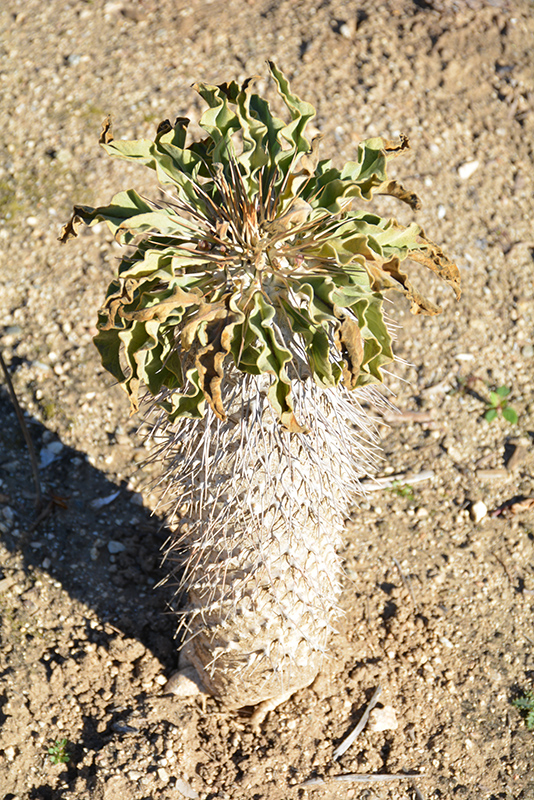Elephant’s Trunk
Description
A stemmed succulent that forms a tall trunk, covered with long spines; compact, wavy green leaves at the crown are deciduous, re-sprouting each spring; yellow flowers emerge in late winter; a striking landscape or garden accent in dry, frost free areas
Landscape Attributes
Elephant's Trunk is an herbaceous perennial with a rigidly upright and towering form. Its relatively fine texture sets it apart from other garden plants with less refined foliage.
Elephant's Trunk is recommended for the following landscape applications;
Planting & Growing
Elephant's Trunk will grow to be about 7 feet tall at maturity, with a spread of 24 inches. It has a low canopy with a typical clearance of 3 feet from the ground. It grows at a slow rate, and under ideal conditions can be expected to live for 60 years or more. As an herbaceous perennial, this plant will usually die back to the crown each winter, and will regrow from the base each spring. Be careful not to disturb the crown in late winter when it may not be readily seen!
This plant should only be grown in full sunlight. It prefers dry to average moisture levels with very well-drained soil, and will often die in standing water. It is considered to be drought-tolerant, and thus makes an ideal choice for a low-water garden or xeriscape application. It is not particular as to soil pH, but grows best in sandy soils. It is somewhat tolerant of urban pollution. This species is not originally from North America, and parts of it are known to be toxic to humans and animals, so care should be exercised in planting it around children and pets..
Elephant's Trunk is a fine choice for the garden, but it is also a good selection for planting in outdoor pots and containers. With its upright habit of growth, it is best suited for use as a 'thriller' in the 'spiller-thriller-filler' container combination; plant it near the center of the pot, surrounded by smaller plants and those that spill over the edges. It is even sizeable enough that it can be grown alone in a suitable container. Note that when growing plants in outdoor containers and baskets, they may require more frequent waterings than they would in the yard or garden. Be aware that in our climate, this plant may be too tender to survive the winter if left outdoors in a container. Contact our experts for more information on how to protect it over the winter months.

